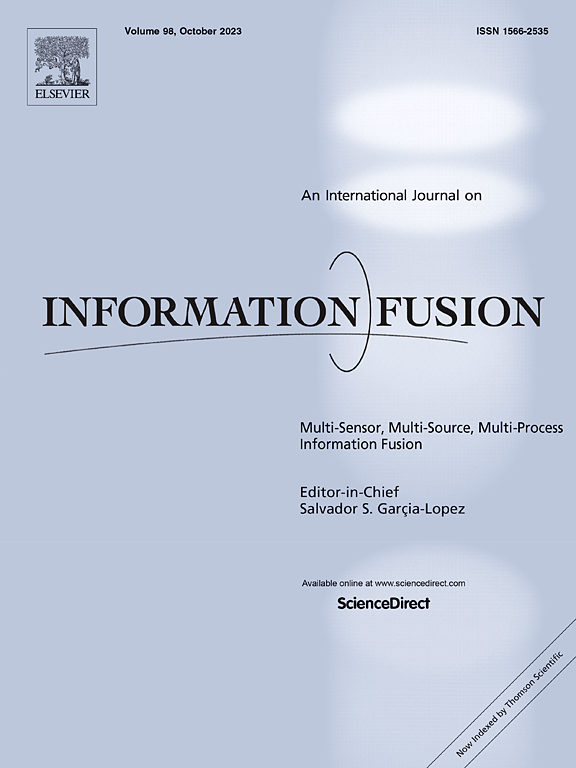Explicitly fusing plug-and-play guidance of source prototype into target subspace for domain adaptation
IF 14.7
1区 计算机科学
Q1 COMPUTER SCIENCE, ARTIFICIAL INTELLIGENCE
引用次数: 0
Abstract
The commonly used maximum mean discrepancy (MMD) criterion has two main drawbacks when reducing cross-domain distribution gaps: firstly, it reduces the distribution discrepancy in a global manner, potentially ignoring local structural information between domains, and secondly, its performance heavily relies on the often-unstable pseudo-label refinement process. To solve these problems, we introduce two universal plug-and-play modules: dynamic prototype pursuit (DPP) regularization and bi-branch self-training (BST) mechanism. Firstly, DPP introduces a new inter-class perspective to stabilize MMD by assigning a source prototype to each target sample. This allows us to utilize inter-class data structure information for better alignment. Next, BST is a novel non-parametric pseudo-label refinement mechanism that updates pseudo labels of target data using a classifier trained on the same distribution as the target domain. This avoids the distribution gap issue, making BST more likely to generate accurate target pseudo labels. Importantly, DPP and BST are universal plug-and-play modules for shallow domain adaptation methods. To demonstrate this, experiments of 3 MMD-based models incorporated with DPP and BST are conducted on Office-Caltech, Reuters21578, and Berlin-Emovo-Tess datasets. Experimental results show that these models incorporated with DPP and BST generally achieve better results compared to not using DPP and BST in terms of multiple metrics including accuracy, F1-score, MCC, and false positive rates. Code of 3 different DA methods enhanced by the plug-and-play DPP and BST is available at: https://github.com/Evelhz/DPP-and-BST.
将源原型的即插即用制导明确地融合到目标子空间中进行域适应
常用的最大平均差异(MMD)准则在减少跨域分布差距时存在两个主要缺陷:首先,它以全局方式减少分布差异,可能忽略域之间的局部结构信息;其次,它的性能严重依赖于往往不稳定的伪标签改进过程。为了解决这些问题,我们引入了两个通用的即插即用模块:动态原型追踪(DPP)正则化和双分支自我训练(BST)机制。首先,DPP引入了一个新的类间视角,通过为每个目标样本分配一个源原型来稳定MMD。这允许我们利用类间数据结构信息来更好地对齐。其次,BST是一种新的非参数伪标签改进机制,它使用在与目标域相同的分布上训练的分类器更新目标数据的伪标签。这避免了分布差距问题,使BST更有可能生成准确的目标伪标签。重要的是,DPP和BST是浅域自适应方法的通用即插即用模块。为了证明这一点,我们在Office-Caltech、reuters - 21578和Berlin-Emovo-Tess数据集上进行了3个基于mmd的模型,并结合DPP和BST进行了实验。实验结果表明,在准确率、f1分数、MCC和假阳性率等多个指标上,与不使用DPP和BST相比,这些结合了DPP和BST的模型总体上取得了更好的结果。通过即插即用DPP和BST增强的3种不同的数据分析方法的代码可在:https://github.com/Evelhz/DPP-and-BST获得。
本文章由计算机程序翻译,如有差异,请以英文原文为准。
求助全文
约1分钟内获得全文
求助全文
来源期刊

Information Fusion
工程技术-计算机:理论方法
CiteScore
33.20
自引率
4.30%
发文量
161
审稿时长
7.9 months
期刊介绍:
Information Fusion serves as a central platform for showcasing advancements in multi-sensor, multi-source, multi-process information fusion, fostering collaboration among diverse disciplines driving its progress. It is the leading outlet for sharing research and development in this field, focusing on architectures, algorithms, and applications. Papers dealing with fundamental theoretical analyses as well as those demonstrating their application to real-world problems will be welcome.
 求助内容:
求助内容: 应助结果提醒方式:
应助结果提醒方式:


